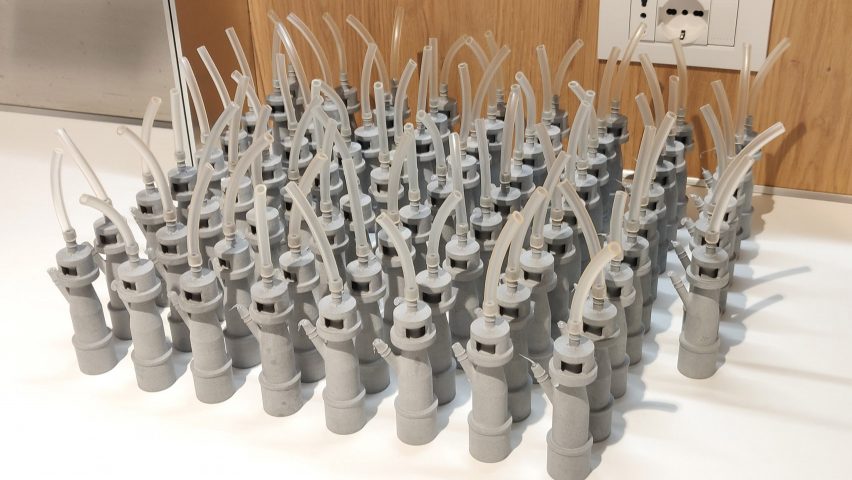
3D printers fabricate emergency valves for ventilators to keep coronavirus patients breathing
Italian additive manufacturing start-up Isinnova has reverse engineered and 3D printed a crucial valve for an overrun hospital in Chiari, a small town in Lombardy which is among the areas worst affected by the coronavirus outbreak.
The valve is a key component of Venturi oxygen masks, which are connected to ventilators and used to help patients with respiratory diseases like coronavirus Covid-19 breathe.
Of the almost 3,000 people that have died of the coronavirus in Italy, at least 1,420 were in Lombardy, and hospitals in the area have shortages of beds and medical equipment.
The supplier of the Chiari hospital was unable to provide the crucial valve due to the unprecedented demand, leading a local journalist to reach out to the community of 3D printing companies in the area.
View this post on Instagram
Isinnova and its CEO Cristian Fracassi volunteered and contacted the valve's original manufacturer, Intersurgical.
However as they couldn't obtain the 3D models of the part, Fracassi reverse engineered its structure and was able to 3D print the first prototype within six hours using a filament extrusion system.
"The valve has very thin holes and tubes, smaller than 0.8m - it's not easy to print the pieces," Fracassi told the BBC.
"Plus you have to respect not [contaminating] the product – really it should be produced in a clinical way."
The first batch of valves was used to help 10 patients at the hospital and another local 3D printing company called Lonati helped to print 100 more based off of Fracassi's replicated design.
Although there were reports that the medical device manufacturer behind the valve threatened to sue the 3D printers for infringing the patent, Intersurgical managing director Charles Bellm told the Verge this was not true.
"We have categorically not threatened to sue anyone involved," he said in a statement.
Fracassi added that he is not looking to sell the part or to make the design publicly available.
"There were people whose lives were in danger and we acted," he wrote on Facebook. "We have no intention of profiting from this situation, we are not going to use the designs or product beyond being forced to act, we are not going to circulate the drawing."
Complimenti a Cristian Fracassi, @temporelli73 e tutte le persone che lo hanno aiutato nella impresa di stampare in 3d le valvole mancanti per i respiratori dell'Ospedale di Chiari a Brescia.
(qui l'articolo completo https://t.co/QYZu6x9X1T) #SolidarietaDigitale #iorestoacasa pic.twitter.com/dF3G2RJY8S— Paola Pisano (@PaolaPisano_Min) March 15, 2020
In Asia, 3D printing technology has already been used to manufacture micro homes for quarantined coronavirus patients in Xianning, China, as well as to create protective goggles and face shields to protect hospital staff.
In the face of the pandemic, a slew of designers have turned their attention to protective and sanitising products, creating everything from graphene-infused face masks, to full-body weareable shields and a sterilising lamp.